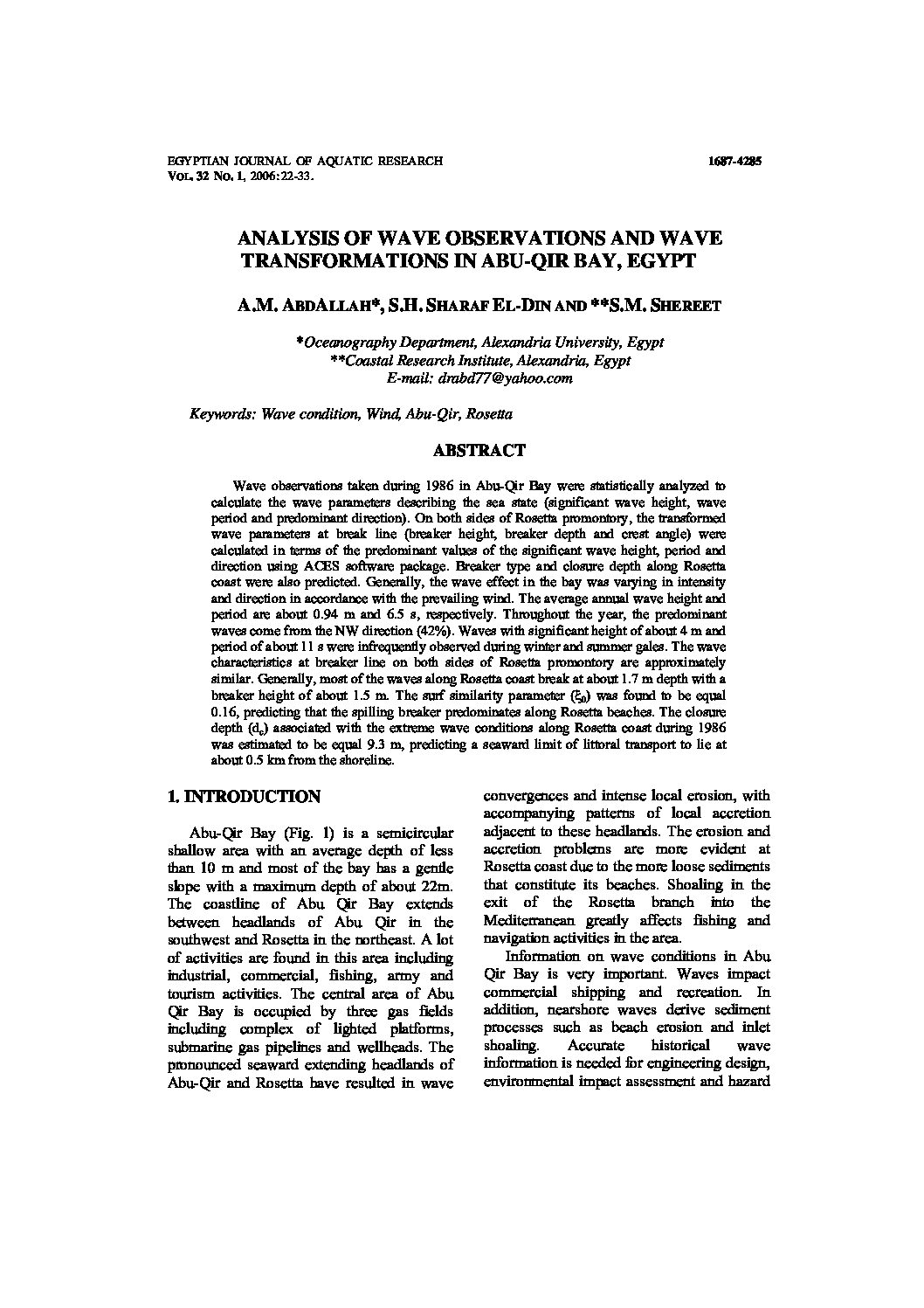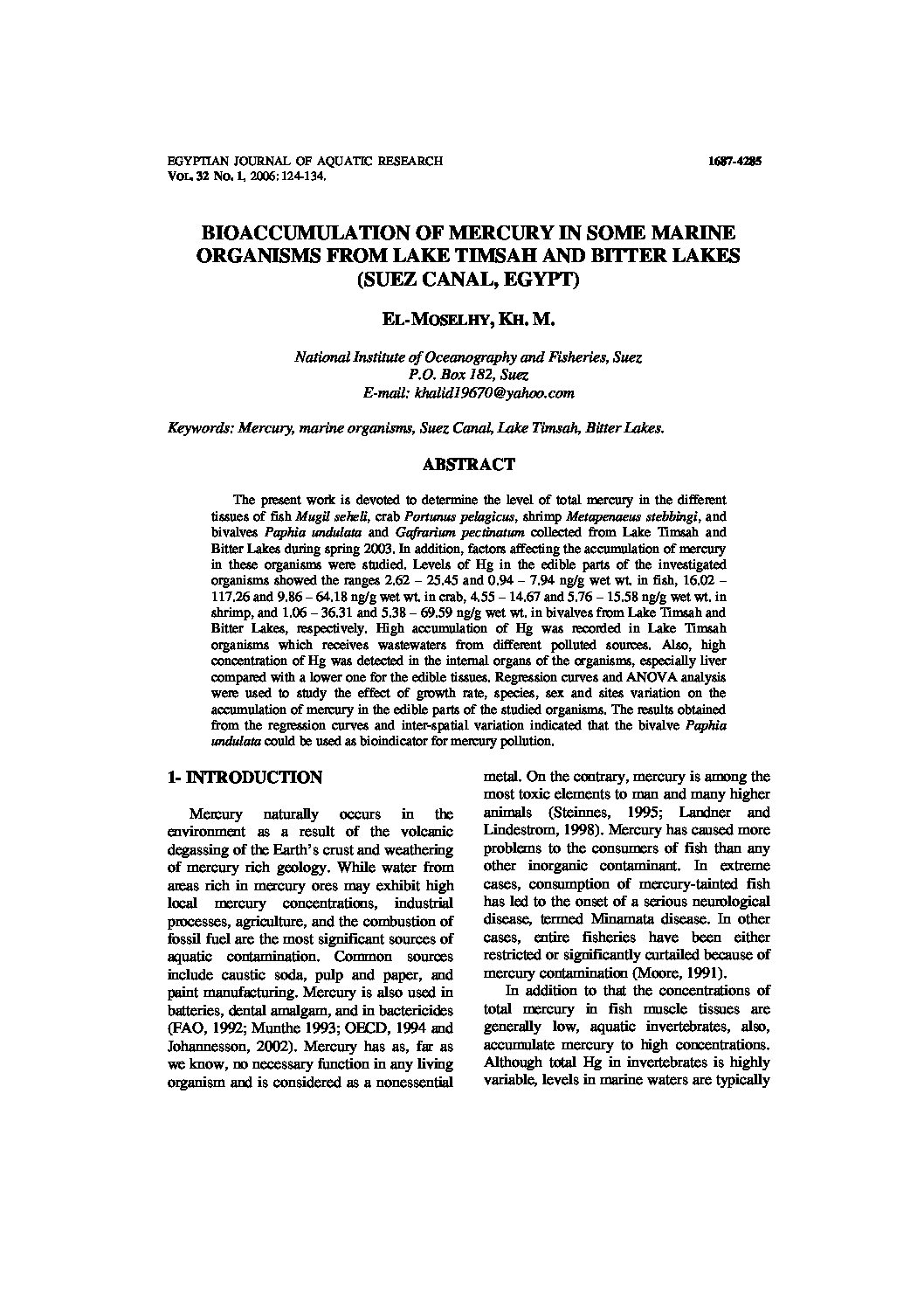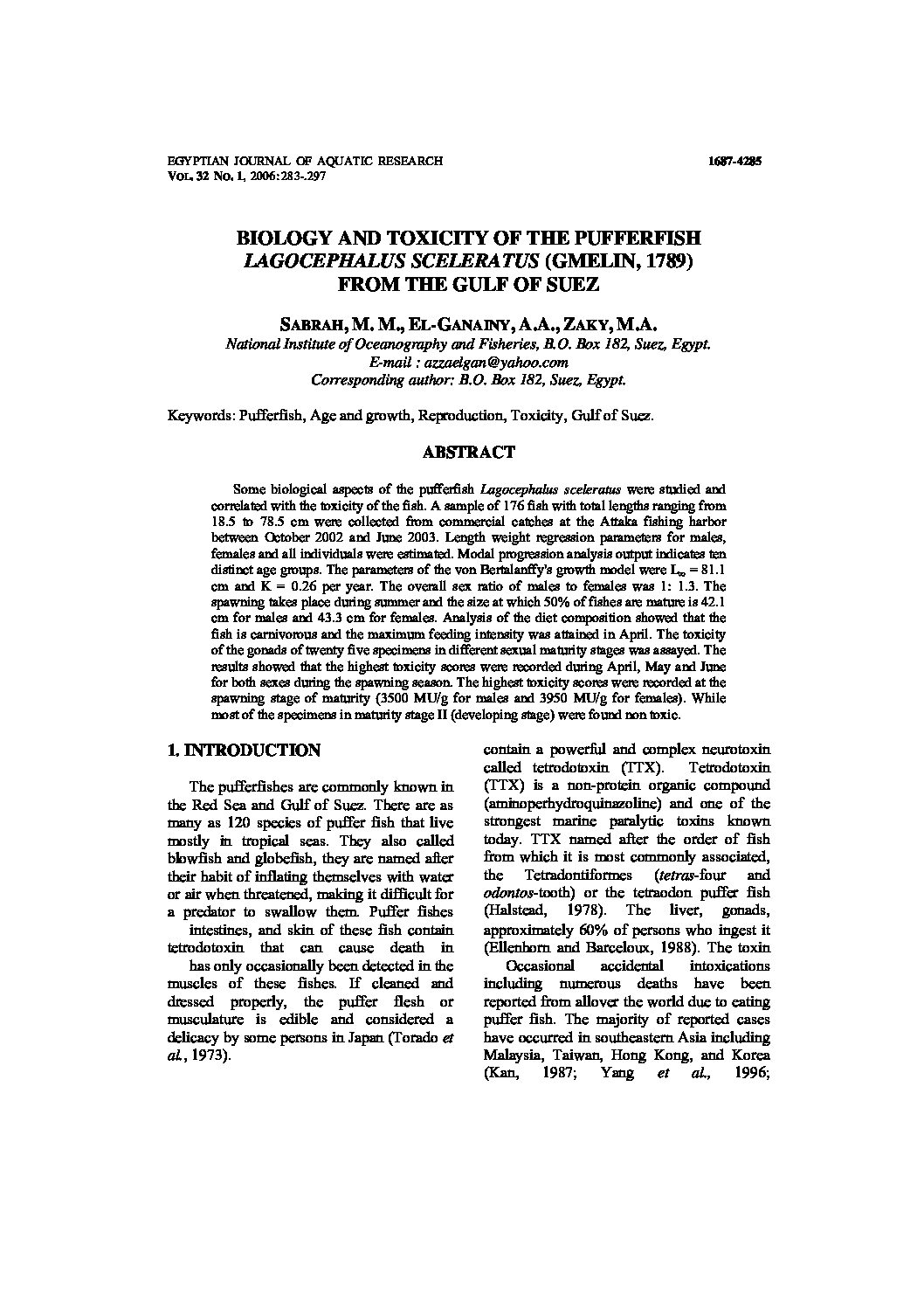Categories
vol-32ANALYSIS OF WAVE OBSERVATIONS AND WAVE
TRANSFORMATIONS IN ABU-QIR BAY, EGYPT
A.M. ABDALLAH*, S.H. SHARAF EL-DIN AND **S.M. SHEREET
*Oceanography Department, Alexandria University, Egypt
**Coastal Research Institute, Alexandria, Egypt
E-mail: [email protected]
Keywords: Wave condition, Wind, Abu-Qir, Rosetta
ABSTRACT
Wave observations taken during 1986 in Abu-Qir Bay were statistically analyzed to
calculate the wave parameters describing the sea state (significant wave height, wave
period and predominant direction). On both sides of Rosetta promontory, the transformed
wave parameters at break line (breaker height, breaker depth and crest angle) were
calculated in terms of the predominant values of the significant wave height, period and
direction using ACES software package. Breaker type and closure depth along Rosetta
coast were also predicted. Generally, the wave effect in the bay was varying in intensity
and direction in accordance with the prevailing wind. The average annual wave height and
period are about 0.94 m and 6.5 s, respectively. Throughout the year, the predominant
waves come from the NW direction (42%). Waves with significant height of about 4 m and
period of about 11 s were infrequently observed during winter and summer gales. The wave
characteristics at breaker line on both sides of Rosetta promontory are approximately
similar. Generally, most of the waves along Rosetta coast break at about 1.7 m depth with a
breaker height of about 1.5 m. The surf similarity parameter (ξ0) was found to be equal
0.16, predicting that the spilling breaker predominates along Rosetta beaches. The closure
depth (dc) associated with the extreme wave conditions along Rosetta coast during 1986
was estimated to be equal 9.3 m, predicting a seaward limit of littoral transport to lie at
about 0.5 km from the shoreline.







